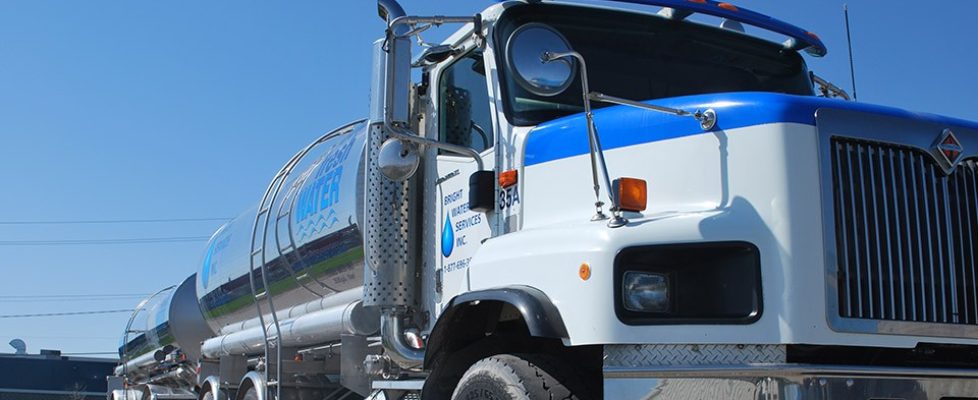Questions About Impacts of Tanker Truck Traffic Carrying Water to Burrillville
There has been discussion and speculation about the impacts of water withdrawal from our aquifer, but little discussion about the impacts of tanker truck traffic.
The available public documents show a range of 15,000 to 724,320 gallons of water per day to be trucked from Charlestown to Burrillville.
The proponents of the project have claimed that the 15,000 gallons of water would require just two to three tanker trucks per day. The larger estimated volume of water would require 97 to 145 tanker truck loads of water. Trucks have to travel in both directions making the total daily range in tanker truck traffic from four trips to 290 truck trips.
If the trucking takes place continuously from 7 a.m. to 7 p.m., the larger volume would result in 24 tanker trucks per hour (one trip every two and a half minutes) passing by the Charlestown Elementary School and then through the village of Carolina on Rt. 112, or by homes on Rt. 2, or adding to the traffic on Rt. 1. Even the route is redacted from the water supply plan except to say the route follows state roads.
The power plant could spread some of this tanker truck traffic out by having a water tank or tanks that hold many millions of gallons of water at the power plant site. This would allow the tanker trips that supply the peak water usage to be spread out over a longer period of time. But no matter how the larger volumes of water are supplied, there will be days or even months when there is increased truck traffic.
Having this huge range of uncertainty is why it is so important for Charlestown to have access to the real data. If the town’s request for intervener status is successful, the Town Council will be better able to assess the impact. *
Once we get more reliable data, we’ll be able to assess impacts such as safety, noise, air quality, cumulative damage to roads, and energy used. Invenergy will pay for the water, but all these other costs associated with health, safety, and diminished quality of life will be borne by the communities the trucks pass through. And it all depends on how much water is trucked on any given day.
One thing that may be straightforward to calculate is a road and bridge damage estimate. The American Association of State Highway Officials (AASHO) has established ESAL. ESAL is the acronym for equivalent single axle load. ESAL is a concept developed to establish a damage relationship for comparing the effects of axles carrying different loads. Once we have data on the number of truck trips, the load, and the route between Charlestown and Burrillville it will be possible to get an estimate of the cost to the state and local taxpayers to subsidize this water transfer. This impact is cumulative and even at the lower water withdrawal volumes it is likely to be significant because of the long distance between Charlestown and Burrillville, the daily trips, and the many years of the project.
There is tremendous irony in the fact that at the same time the state is forcing the clearing of hundreds of acres of South County’s forest for utility scale solar installations they may also approve the removal and trucking of our ground water to cool a fossil fuel power plant.
Encouraging the trucking of water from one end of the state to the other is in contradiction to the state guide plans on transportation and energy. Regardless of its use, the inefficiency of transporting water this distance and outside the Urban Services Boundary is also clearly in violation of the state’s Greenhouse Gas Reduction Plan. The towns are required to adhere to these state guide plans when doing long term planning, shouldn’t the state be held to the same standard?
* UPDATE: On October 17, the Energy Facilities Siting Board granted a motion from Charlestown that allows the town limited intervenor status so many of these questions may now be able to be answered.

October 21, 2017 @ 12:26 am
Looks like Fall River is the other backup water supplier in Invenergy’s recently supplemented water supply plan.
Equally as far away as Charlestown and the same number of trips indicated.
How can a municipal water supplier be allowed to be a redacted supplier in an energy production application in front of the RI EFSB? Moreover, how are they allowed to let the secondary supplier remain redacted? This is nothing more than government corruption.
The fix is in more than ever by this State to railroad this power plant upon all of us.